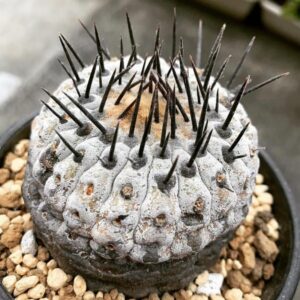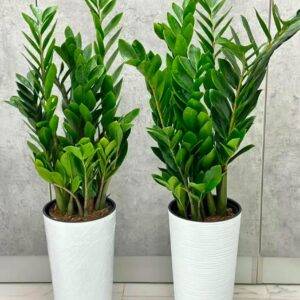Operculicarya Decaryi
Operculicarya Decaryi: A Unique Botanical Gem for Your Collection
Operculicarya decaryi, commonly known as the elephant tree or Madagascar jewel, is a succulent tree native to Madagascar. With its striking appearance and low-maintenance care requirements, this plant has become a favorite among bonsai enthusiasts and gardeners looking for exotic additions to their collections. In this article, we’ll explore everything you need to know about Operculicarya decaryi, from its unique features to cultivation tips, while optimizing SEO strategies for better online visibility.
What are the unique characteristics of Operculicarya decaryi
Operculicarya decaryi, commonly known as the elephant tree or jabily, possesses several unique characteristics:
-
Distinctive appearance: It features a thick, bumpy, twisted trunk with zigzagging branches, giving it a sculptural and natural bonsai-like appearance.
-
Succulent nature: The plant is a thick-stemmed succulent tree, making it drought-tolerant and well-suited for dry conditions.
-
Compact foliage: It has alternate, odd-pinnate leaves with tiny, rounded, shiny dark green leaflets that can turn beautifully red in colder weather.
-
Seasonal changes: The plant is deciduous, losing its leaves in colder temperatures, but remains evergreen in warmer locations.
-
Flowering characteristics: Mature plants produce small reddish to brown flowers (less than 2 mm) at the branch tips in late winter. Male and female flowers grow on separate plants.
-
Fruit production: Female plants bear small spherical fruits that change color from yellow-orange to red.
-
Adaptability: While it thrives in full sun, it can also tolerate partial shade, making it versatile for different growing conditions.
-
Bonsai potential: Its natural growth habit and ability to withstand pruning make it an excellent choice for bonsai cultivation
Why Choose Operculicarya Decaryi?
Operculicarya decaryi stands out due to its distinctive features:
-
Aesthetic Appeal: The thick, gnarled trunk and zigzagging branches give it a sculptural look, making it an excellent choice for bonsai art.
-
Hardiness: This evergreen succulent thrives in dry conditions and can tolerate temperatures down to the 30s °F for short periods.
-
Low Maintenance: Its drought tolerance and minimal watering needs make it ideal for busy plant lovers.
Whether you’re a seasoned gardener or a beginner, Operculicarya decaryi is a versatile addition that combines beauty with resilience.
Care Requirements for Operculicarya Decaryi
Proper care ensures your Operculicarya decaryi thrives. Here’s a breakdown of its needs:
Light
Place the plant in bright, indirect sunlight. While it can handle direct sun, avoid intense afternoon rays to prevent sunburn. Indoor growers should position it near south-facing windows for optimal light exposure.
Soil
Use well-draining soil, such as a cactus or succulent mix. Proper drainage prevents waterlogging and root rot, which are common issues for succulents3.
Watering
Allow the soil to dry completely between waterings. During the growing season (spring and summer), water more frequently but reduce watering during winter dormancy3.
Temperature
This plant prefers warm temperatures and should be protected from frost. If you live in colder climates, move the plant indoors during winter months3.
Humidity
Operculicarya decaryi tolerates low humidity but benefits from occasional misting in dry indoor environments3.
Fertilization
Feed the plant with diluted liquid fertilizer every 4–6 weeks during the growing season. Avoid fertilizing during winter dormancy3.
Bonsai Potential
Operculicarya decaryi’s thick trunk and compact growth make it ideal for bonsai cultivation. Regular pruning helps maintain its shape and encourages bushier growth. Highlight its natural beauty by trimming leggy or dead branches3.
Propagation Tips
Propagating Operculicarya decaryi is straightforward:
-
Take stem cuttings during the growing season.
-
Allow cuttings to callus for 1–2 days before planting them in well-draining soil.
-
Keep the soil slightly moist until roots develop3.
Pests and Diseases
Common pests include mealybugs and scale insects. Combat infestations by wiping affected areas with a damp cloth or applying neem oil. Ensure good air circulation to prevent fungal issues3.
SEO Tips for Promoting Operculicarya Decaryi
If you’re selling or blogging about Operculicarya decaryi, effective SEO strategies can boost your online visibility:
1. Keyword Optimization
Use relevant keywords like “Operculicarya decaryi care,” “Madagascar jewel bonsai,” or “elephant tree succulent.” Incorporate these naturally into titles, headings, and meta descriptions.
2. High-Quality Content
Write engaging articles that answer common questions about the plant’s care and uses. Include detailed guides and tips to provide value to readers while increasing dwell time on your site.
3. Image Optimization
Add high-quality images with descriptive file names (e.g., “elephant-tree-bonsai.jpg”) and alt text that includes keywords to enhance search engine indexing.
4. Mobile-Friendly Design
Ensure your website is responsive across devices so users can easily access your content on smartphones or tablets1.
5. Internal Linking
Link related articles or products (e.g., succulent care guides or fertilizer recommendations) to improve navigation and boost page authority.
Conclusion
Operculicarya decaryi is more than just a plant; it’s a living piece of art that brings character to any space. Its unique appearance, adaptability, and ease of care make it a must-have for gardening enthusiasts and bonsai artists alike.
By following the care tips above and leveraging SEO strategies, you can showcase this remarkable plant to a wider audience while ensuring it thrives in your collection. Whether you’re cultivating it as a bonsai masterpiece or simply enjoying its natural charm, Operculicarya decaryi is sure to impress!






Reviews
There are no reviews yet.